Key takeaways:
- Climate change significantly impacts grape maturation, prompting adaptations in vineyard management to cope with unpredictable weather patterns.
- Organic farming methods enhance biodiversity and soil health, contributing to long-term sustainability and consumer demand for environmentally conscious practices.
- Techniques such as drip irrigation, mulching, and rainwater harvesting are crucial for water conservation in organic wine production.
- Adapting grape varieties for resilience leads to innovative flavors and improved vineyard sustainability in the face of climate challenges.
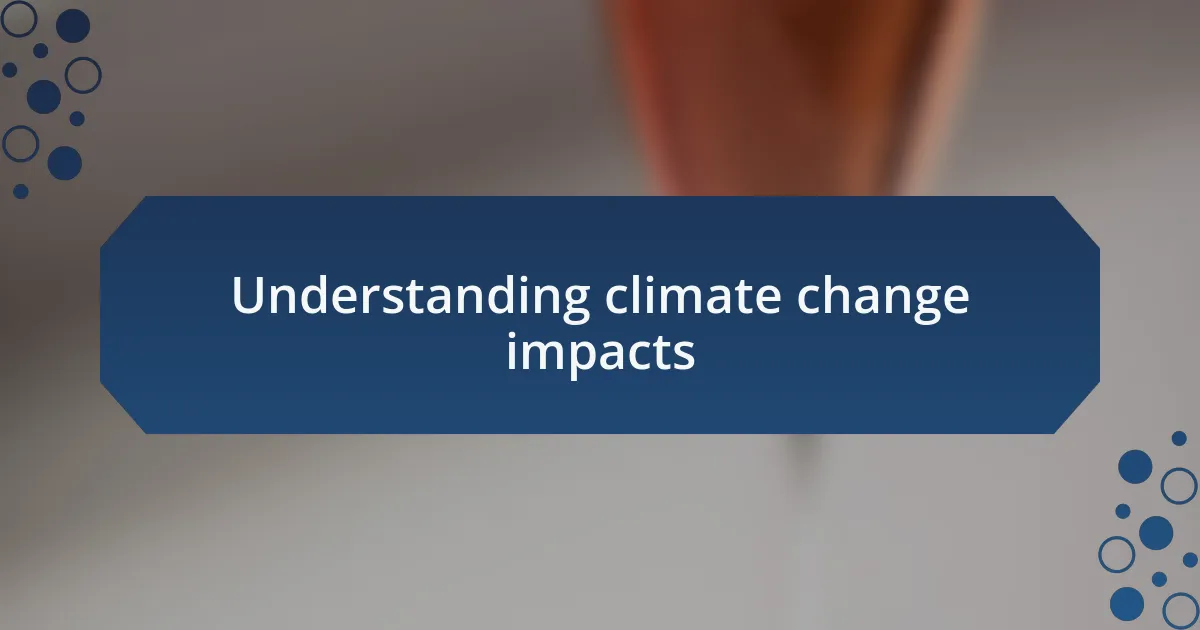
Understanding climate change impacts
Climate change impacts are complex and multifaceted, especially in the realm of organic wine production. I often find myself pondering how shifting weather patterns influence grape maturation. For instance, I noticed that one particular season, my vineyard faced an unusual late frost; it left me anxious, wondering how my crops would fare. Such firsthand experiences really highlight the unpredictability that climate change brings to the agricultural table.
I remember a summer when temperatures soared far beyond what we typically expect. It prompted a realization: we can’t just plant and wait anymore. I had to rethink my practices to mitigate the effects of heat stress on my vines. This situation illustrated the urgency of adapting our techniques; there’s little room for complacency.
Water availability is another significant factor that directly ties into climate change. I’ve seen firsthand how drought can drastically affect the soil health and the vitality of the vines. Watching the soil dry up, I often find myself questioning how we can ensure our regenerative practices are effective. How can we sustain our vineyards in a changing climate? In my experience, this requires innovative strategies, continuous learning, and sometimes, a leap of faith in new methods.
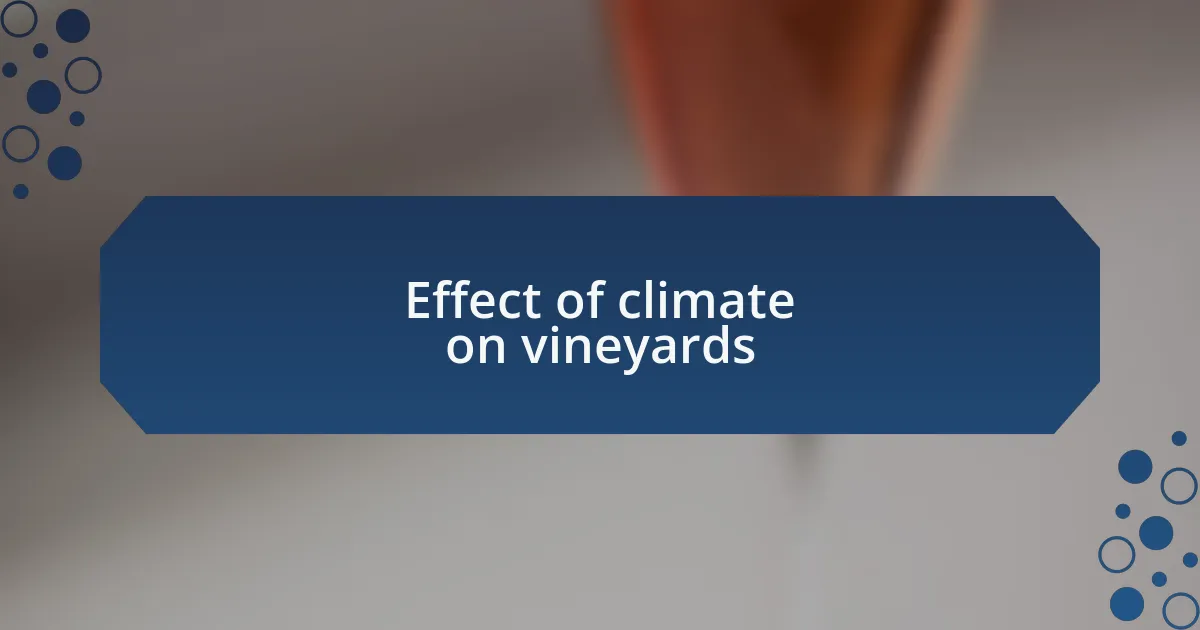
Effect of climate on vineyards
The climate profoundly affects the health and yield of vineyards. For example, during one particularly dry season, I watched with concern as my vines struggled to cope with the heat. The fruits developed fewer sugars, leading me to wonder if my harvest would meet the quality standards we’ve come to cherish. Memories like this make me appreciate the delicate balance that climate maintains in our wine production.
I vividly recall a harvest season altered by unexpected rain patterns. Just when I thought the grapes were ready to be picked, persistent rain led to concerns about mildew and disease. This situation drove home the lesson that understanding climate variations is crucial. How can we improve our timing and practices when Mother Nature feels so unpredictable?
Moreover, as the climate shifts, so does the growing season. I noticed that our vines began budding earlier in the year, which raised questions about the long-term implications for flavor and acidity. This change forces us to adapt our approaches continuously, ensuring we not only survive but thrive in this evolving landscape. How flexible can we be with our vineyard practices to maintain the quality of our wines?
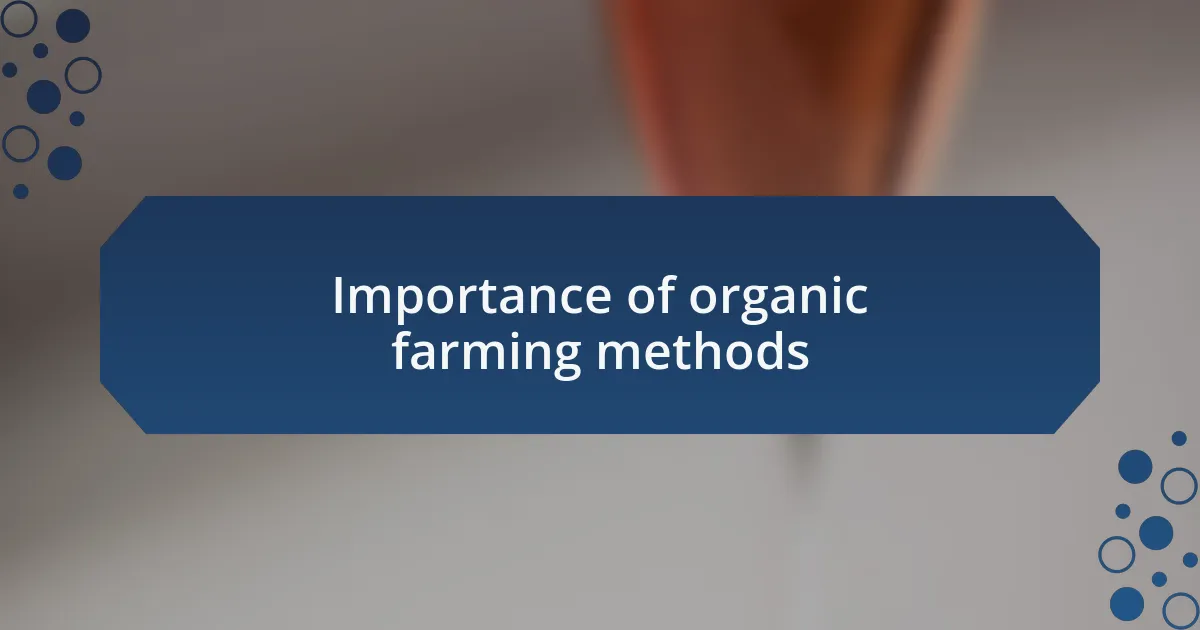
Importance of organic farming methods
Organic farming methods play a crucial role in promoting biodiversity and soil health. I’ve found that organic vineyards often attract a variety of beneficial insects, such as ladybugs and bees, which help manage pests naturally. Could it be that investing in these diverse ecosystems not only enhances the vineyard’s resilience but also brings a sense of harmony to our farming practices?
One of the most profound realizations I’ve had is how organic practices contribute to long-term sustainability. When I transitioned to organic methods, I noticed an incredible improvement in soil quality, with increased organic matter and microbial activity. This shift not only nourishes the vines but also fosters a deeper connection to the land. Isn’t it rewarding to witness how nature responds positively to our mindful choices?
Furthermore, consumers today are increasingly aware of the environmental impact of their choices. I’ve had countless conversations with wine enthusiasts who appreciate the story behind organic wines—how they reflect a commitment to sustainability and ethical production. This connection between the vineyard and the consumer makes our work more fulfilling, doesn’t it? Engaging in organic farming not only addresses climate challenges but also creates a community of like-minded individuals who value responsible consumption.
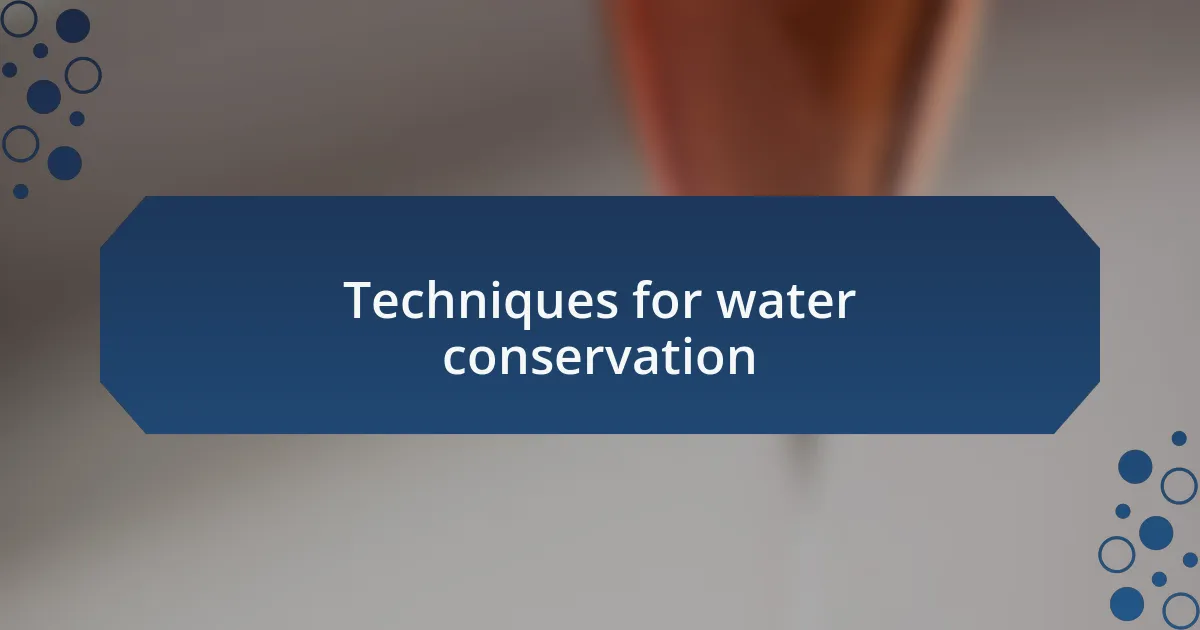
Techniques for water conservation
Implementing techniques for water conservation is essential in our journey towards sustainable organic wine production. I’ve employed drip irrigation systems in my vineyard, which deliver water directly to the roots. This precise method not only minimizes evaporation but also reduces water wastage significantly—don’t you just love how technology can align with nature for such harmony?
Another strategy I’ve found effective is mulching. By covering the soil with organic materials, I help retain moisture and suppress weeds. Last summer, after a particularly dry spell, it was awe-inspiring to see how my vines thrived despite the harsh conditions. Have you ever experienced that sense of relief when you realize your practices are protecting the plants you nurture?
Rainwater harvesting is also a technique I’ve embraced wholeheartedly. Collecting rainwater from the vineyard’s structures allows me to make the most of natural resources. It’s gratifying to know that every drop I save contributes to the health of my grapes and the surrounding ecosystem. Isn’t it amazing how small changes can lead to significant benefits for both the land and the wine produced?
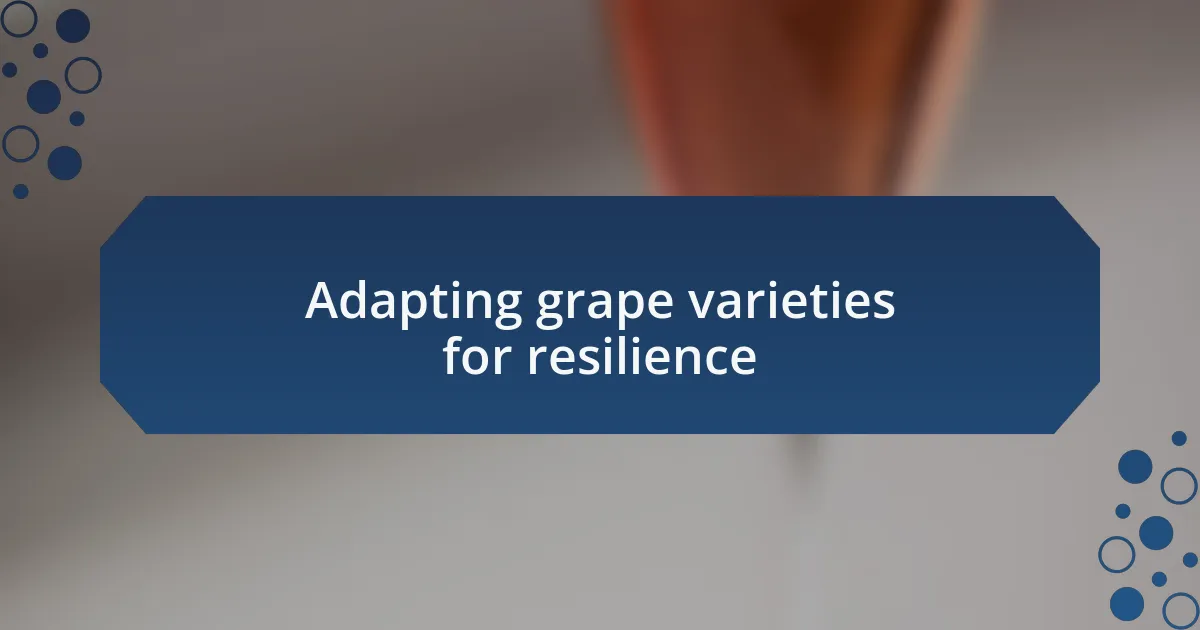
Adapting grape varieties for resilience
When it comes to adapting grape varieties for resilience, I’ve found that selecting varieties with a higher tolerance to heat and drought can be a game-changer. For example, bringing in some lesser-known hybrids has proven beneficial for my vineyard; they not only withstand extreme temperatures but also contribute unique flavors to the wine. Isn’t it fascinating how diversity in grape varieties can lead to both resilience and innovation?
I’ve also had my share of trial and error. A few years back, I experimented with traditional varieties, and while they were beautiful, they struggled during the hot months. This experience taught me that sometimes, stepping outside the norm is necessary for a sustainable future. Have you ever felt that buzz of excitement when trying something new in your own ventures?
Moreover, incorporating climate-resilient grape varieties has opened up new avenues for blending wines. I recall the first time I crafted a blend with a robust variety that weathered the storm—literally and figuratively. The result was a rich wine that not only told the story of resilience but also captured the essence of our unique climate. How incredible is it to think that adapting to change can lead to the creation of something truly special?
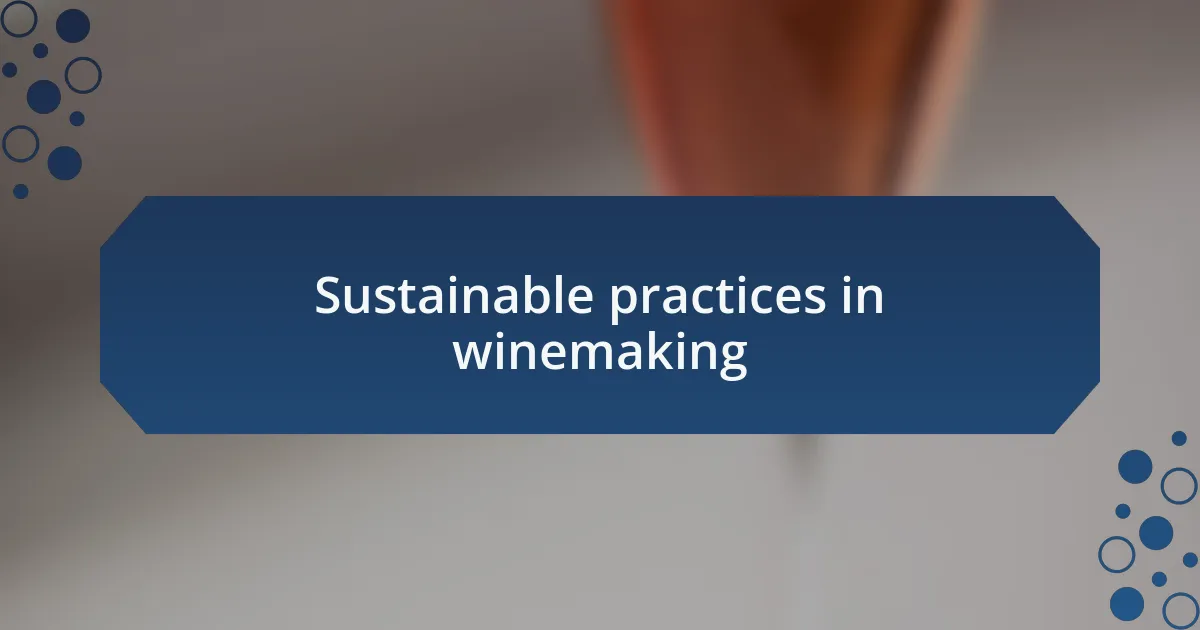
Sustainable practices in winemaking
Sustainable practices in winemaking often revolve around the careful management of resources. For instance, I’ve implemented a rainwater harvesting system in my vineyard that catches and stores water during rainy seasons. Not only does this reduce my reliance on the municipal supply, but it also gives me peace of mind knowing I’m utilizing nature’s bounty. Have you ever thought about how small changes can lead to significant impacts?
Another key aspect is the introduction of cover crops in my vineyard. When I first started planting these alternatives, I noticed they improved soil health remarkably by adding organic matter and increasing biodiversity. It was gratifying to see not just the benefits to the soil, but also an uptick in local wildlife returning to my property—yes, even the bees! How rewarding it is to create a thriving ecosystem while producing quality wine.
On a more technical level, I’ve embraced organic pest management techniques, using natural predators instead of synthetic chemicals. I remember the hesitation I felt the first time I released ladybugs in my vineyard. It turned out to be one of the best decisions I ever made. Watching them thrive and effectively manage pest populations felt like a personal victory in my journey toward sustainable winemaking. Isn’t it remarkable how aligned our choices can be with the health of our planet?
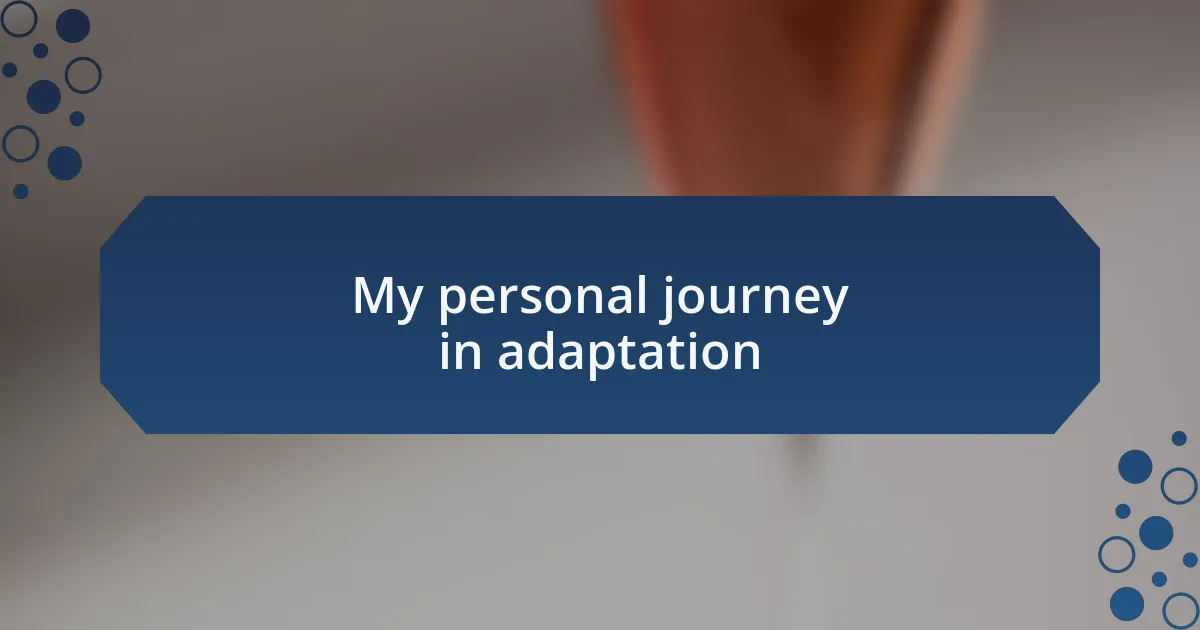
My personal journey in adaptation
In my journey of adapting to climate change, I vividly recall a summer where the heat took me by surprise. The grapes were struggling, and I felt a pang of fear mixed with determination. Rather than succumbing to anxiety, I decided to plant more resilient grape varieties that could withstand the harsh conditions. This decision turned out to be not just practical, but also a deeply satisfying experience, knowing I was taking proactive steps to safeguard my vineyard’s future.
One particularly memorable moment occurred when I started experimenting with mulching techniques. I remember the first time I saw the difference it made during a drought. The soil remained cool and moist, and I felt a surge of pride as I realized the importance of adapting my practices. Witnessing the direct benefits to grape quality was not only rewarding but reinforced my belief that careful adaptation can yield delightful surprises.
Listening to the rhythm of nature and changing my approach has been a journey itself. There were days filled with uncertainty, where I questioned if my choices were right. Yet, each small success—like a bountiful harvest from a newly planted drought-resistant variety—has given me hope. Isn’t it inspiring to see how adapting our methods not only impacts the vineyard but also fosters a deeper connection to the land we cherish?